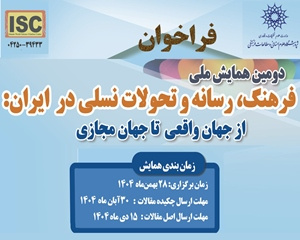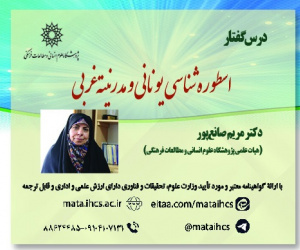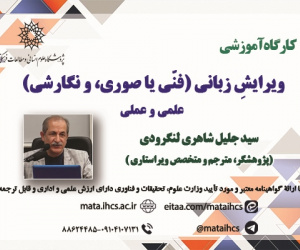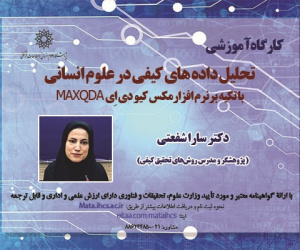تدقیق دو مفهوم «نمونه» و «مورد» و سنجش نسبت آن ها با «طراحی پژوهی» در معماری منظر (مقاله علمی وزارت علوم)
درجه علمی: نشریه علمی (وزارت علوم)
آرشیو
چکیده
اصطلاح «نمونه موردی» کاربرد زیادی در معماری منظر دارد. اما درباره مفهوم این اصطلاح مطالعه قابل توجهی انجام نشده است. تحقیق حاضر بر آن است تا ضمن تدقیق تفاوت دو مفهوم «نمونه» و «مورد»، به عنوان واژگان تشکیل دهنده اصطلاح فوق، ارتباط آن ها را با پارادایم «طراحی پژوهی» بسنجد. هدف، کاهش موانع نظری و ضعف اصطلاح شناسی است. راهبرد تحقیق استدلال منطقی است. نخست با مطالعه کتابخانه ای، دوره های اصلی که معنای واژه ها در بستر آن ها بروز می یابد استخراج شده است. دوم، با تحلیل محتوای کیفی این دوران ها، تعاریفی برای تشخیص تفاوت اصطلاحات پیشنهاد شده است. سوم با تکمیل پرسشنامه از میان دانشجویان تحصیلات تکمیلی، که تحت تعلیم استادان مختلفی در طی تحصیل شان بوده اند، نتایج مرحله دوم بررسی و نهایتا نتیجه گیری شده است. نتایج نشان می دهد بین «نمونه» و «مورد» تفاوت معنایی مهم روش شناختی وجود دارد که حداقل می تواند منجر به تفکیک پنج اصطلاح «پیشینه ها»، «نمونه موردی»، «نمونه آماری»، «موردِ پژوهشی» و «موردْ پژوهی» گردد ولی این تفاوت معنایی نزد پاسخ دهندگان کم رنگ و فاقد وجه بین الاذهانی است. «مطالعه مورد ها» در مقایسه با «مطالعه نمونه ها»، به سبب وجود ظرفیت های بالا برای مواجه شدن با گوناگونی، پیچیدگی و نامعلومی، توان بیشتری برای ادغام با طراحی پژوهی دارد؛ ولی بخش بسیار اندکی از پاسخ دهندگان با مفهوم طراحی پژوهی آشنا هستند.An Examination of the Difference Between “Sample” and “Case” Concepts and Their Relations with “Design Research” in Landscape Architecture
The two terms "sample" and "case" are widely used in the field of landscape architecture but there is rarely significant study on the meanings of these two common concepts. This research aims to verify the difference between the two concepts "sample" and "case" and examine their relationship with the paradigm of "design research" in the discipline of landscape architecture. The goal is to reduce theoretical difficulties and weaknesses in related terminology and research methodologies.
The research strategy is logical argumentation. First, through documentary study, the main periods in which the terms appear in their context were extracted. Second, qualitative analysis and coding of this context, definitions were proposed to distinguish the terms. Third, through a questionnaire among students, the results of the second step were examined and finally a conclusion has been drawn , leading to conclusions.
The documentary study results reveal that there is an important methodological and semantic difference between "sample" and "case," which can result in the extraction and separation of five different terms: "precedents," "example," "statistical sample," "case study," and "research case." However, this difference lacks clear verification and does not have intersubjective agreement among the respondents. According to the results , investigation of "cases" compared to "samples," due to their greater capacity to address diversity, complexity, and uncertainty, has a greater ability to integrate with research design, but a very small proportion of the respondents were familiar with the paradigm of research design.
Considering the limited scope of the terms mentioned by the respondents and the incoherence in the difference between the meaning of "sample" and "case," it can be concluded that there is no comprehensive methodological vision. On the other hand, since superficial applications and imitation are the most frequent problems when using the concepts of case or sample, it can be concluded that the current status reflects the most basic level among five levels of progress for action in investigating these concepts. Results also indicate that extracting or verifying intersubjective terms remains difficult and requires further research and practical applications.
Results also show that the findings regarding case study terminology and methodologies are still limited. A systematic review, researcher networks, continuous fieldwork, and training initiatives are now necessary to advance this field. It is necessary to avoid simplistic interpretations of "sample" or "case" and instead aim for methodological and practical clarity. Both the "sample" and "case" have the potential to play a significant role in any lesson or experience through diverse forms and methods. The results confirm previous findings and highlight persistent weaknesses in this field. Finally, while the distinction and proposed terms did not achieve broad intersubjective agreement or verification, this study constructs a basis for dealing with the difference between "sample" and "case," which can serve as a foundation for future research.








